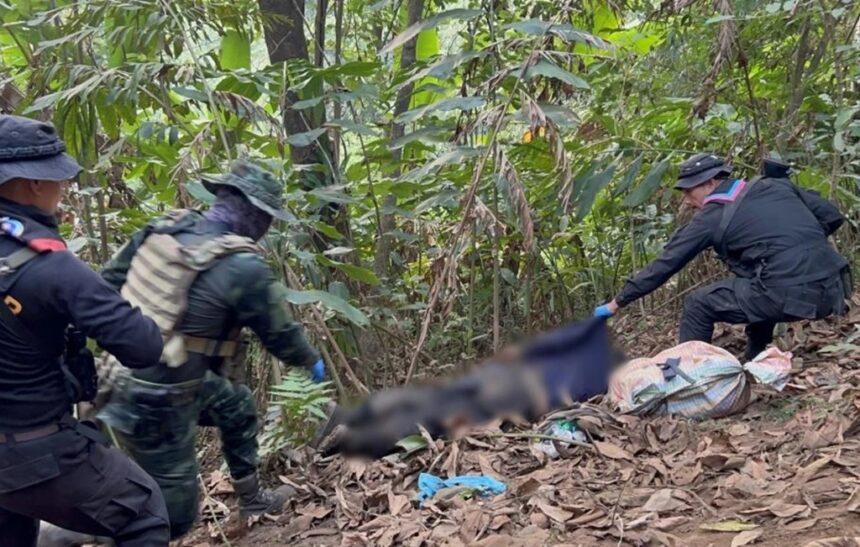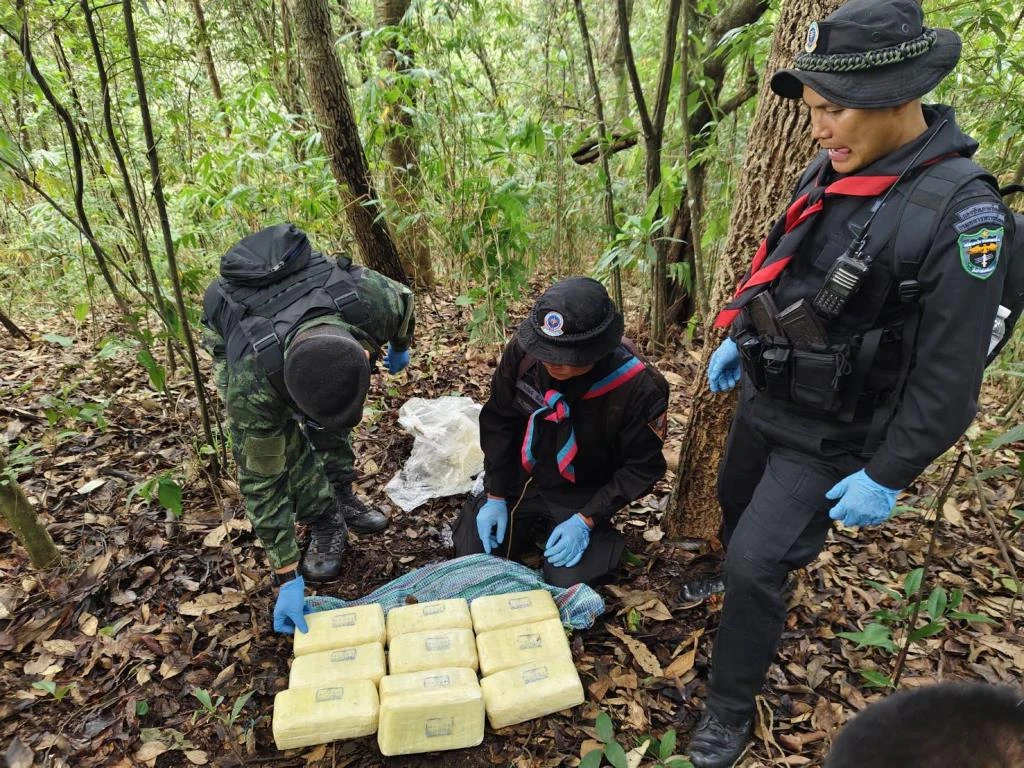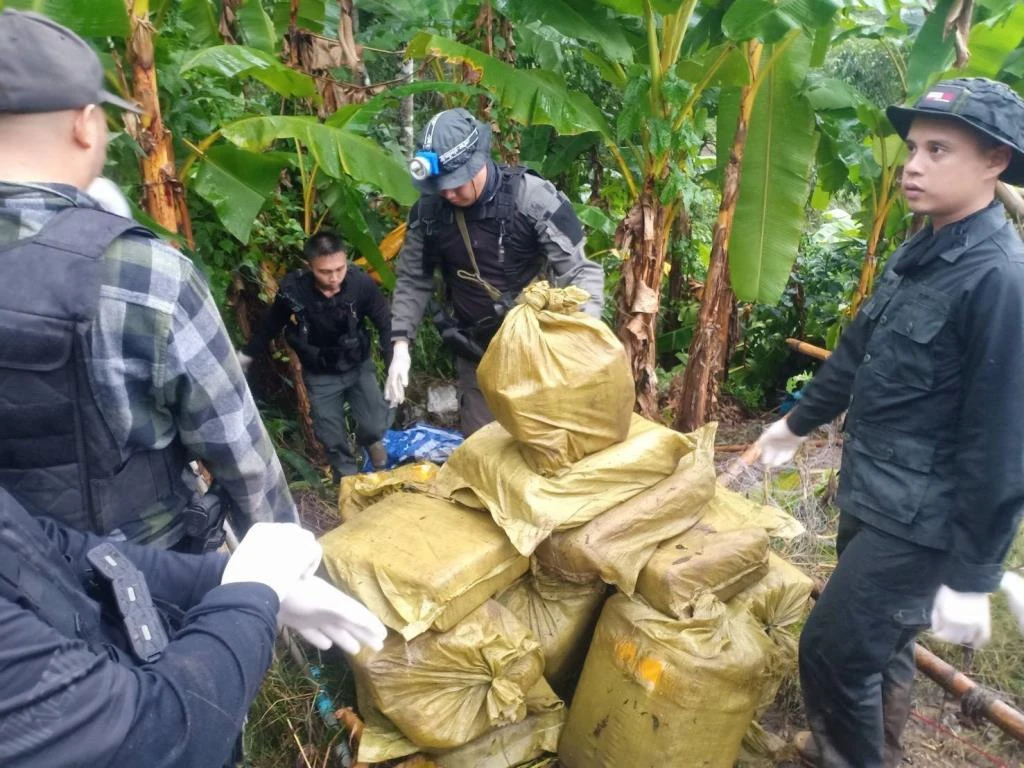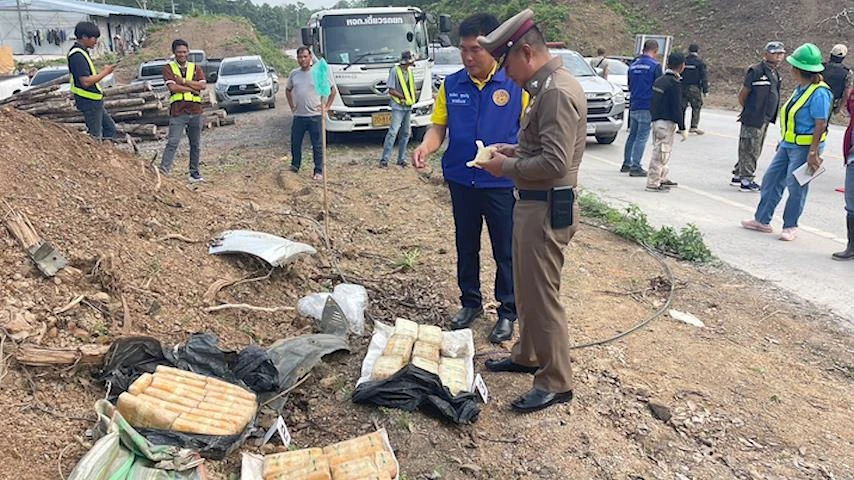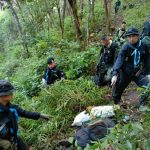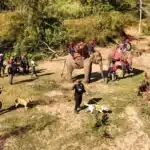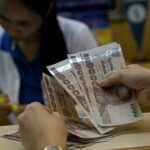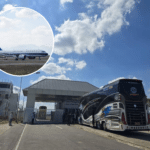CHIANG RAI – Over the last eight months, the army’s Pha Muang Task Force has reported a sharp increase in drug busts along Thailand’s northern border. Army soldiers have intercepted illegal drugs with an estimated street value close to 26 billion baht, especially around Chiang Rai and Chiang Mai.
From October 2024 through early June, soldiers stopped 284 smuggling attempts. They arrested 299 suspects and seized a huge amount of drugs. Authorities recovered more than 112 million meth pills.
In Chiang Rai, army soldiers from the Pha Muang Task Force confiscated over 57 million pills, while Chiang Mai saw about 55 million pills taken off the streets. The rest were found in the provinces of Phayao, Nan, Uttaradit, and Phitsanulok.
The army also confiscated 145 kilograms of heroin. Most of it came from Chiang Rai, with a smaller amount from Chiang Mai. Ice (crystal meth) seizures reached just over 8,000 kilograms, mostly from Chiang Rai, plus over 1,200 kilograms from Chiang Mai.
Officers also found 42.9 kilograms of opium and 695 kilograms of ketamine.
If these drugs had made it to Bangkok, authorities estimate the economic impact could have topped 25.7 billion baht.
During this period, troops clashed with drug-smuggling groups 40 times. Sixteen traffickers were killed in these encounters. The most recent shootout took place late at night on June 4.
Soldiers from the Fourth Cavalry Company crossed paths with traffickers near the Thai-Myanmar border at Phabong, Mon Pin, Fang district, Chiang Mai. One suspect was killed, and troops seized three bags containing 200,000 meth pills and nearly 21 kilograms of raw opium.
The military says it will keep up efforts to stop drug trafficking in the region.
Drug Runners Thwarted in Lampang
Meanwhile, Police in Lampang intercepted two major drug smuggling attempts in Ngao district on June 6. The first incident happened in the morning, when officers received a tip about an accident on Wang Sai Road, Highway 103, in Mae Teeb, Ngao.
Rescuers and police arrived to find a Mazda 2 sedan from Lamphun overturned off the roadside. The driver was gone. During a search, officers discovered nearly 300,000 methamphetamine pills packed inside the car.
Authorities quickly contacted local officials to secure the scene and collect evidence. Police are working to track down the car’s owner and bring them in for questioning.
Later that afternoon, officials received information about a suspicious Toyota pickup truck with Bangkok plates entering the area. Local leaders and police from several agencies worked together to stop the truck at the Na Kae checkpoint in Ngao.
A first search turned up nothing, but officers moved the vehicle to a garage for a more thorough inspection. Around 4 pm, they found 162 kilograms of heroin packed into 462 bars. The drugs were hidden under the truck bed and in a compartment near the cab.
Police arrested two suspects from Chiang Rai found with the pickup and confiscated the heroin. Investigators are now working to trace the source of both drug shipments and press charges.
Drug trafficking in Northern Thailand, particularly in the Golden Triangle region where Thailand, Myanmar, and Laos converge, is a persistent issue driven by the area’s geography and socio-economic factors.
The region, historically notorious for opium and heroin production, has shifted toward synthetic drugs like methamphetamine (ya ba) due to high demand and profitability.
Most drugs, especially methamphetamine, originate in Myanmar’s Shan State, where ethnic armed groups and militias produce vast quantities—estimated at hundreds of tons annually—to fund conflicts against the Myanmar military.
These groups exploit porous borders, dense jungles, and remote mountainous terrain to smuggle drugs into Thailand, often for further distribution to markets like Bangkok, Malaysia, Japan, and Australia.




